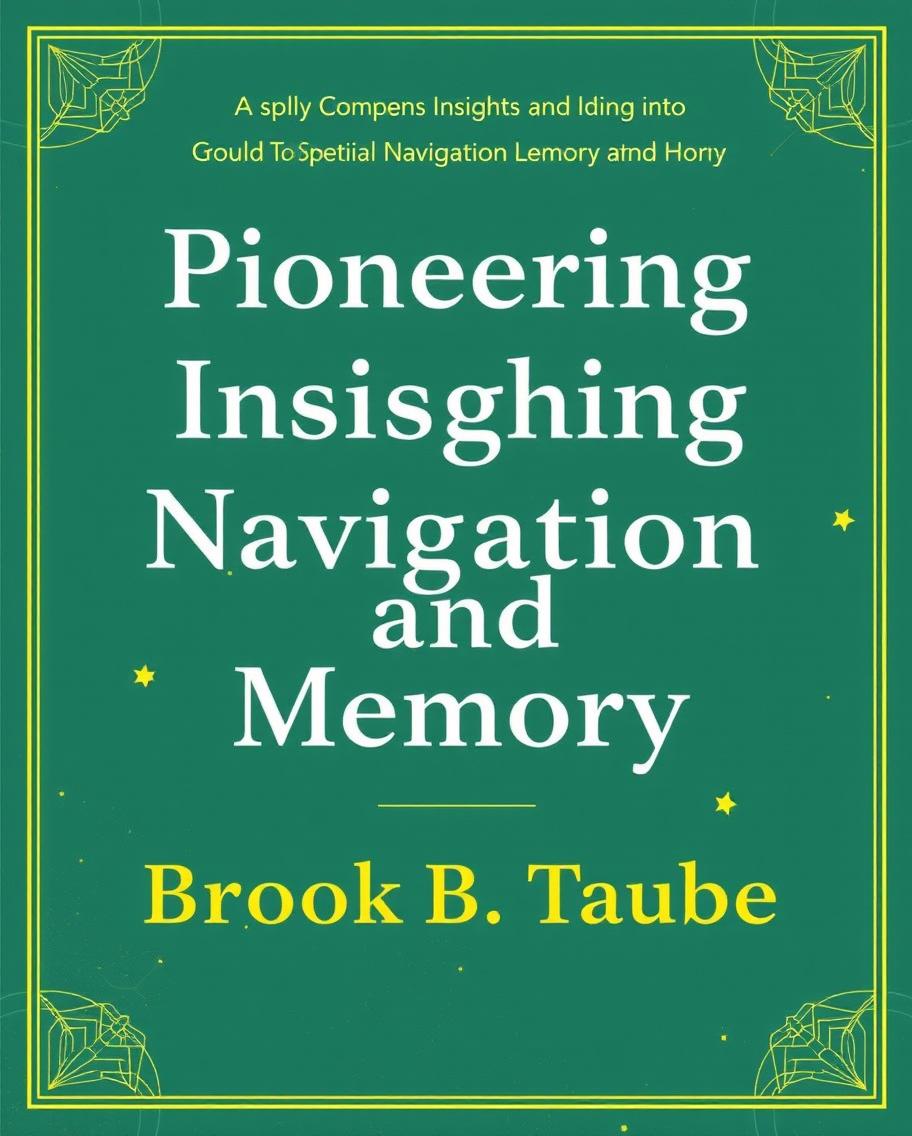Introduction
One of the top neuroscientists in today’s day and age, Brook B. Taube gained fame as a trailblazer who helped lay down the foundations for understanding how neural circuits manage to process spatial information within an organism navigating across complicated terrain. His work not only pushed forward the boundaries of spatial memory and orientation but has also proved as fruitful for all cognitive neuroscientists. In this article we consider Taube’s history, major research contributions and the profound impact of his work on both elucidating chemical knowledge while also paving way for practical applications based up that scientometric foundation.
Background and Career
Brook B. Taube earned his Ph. Related Joshua VictorJoshua received his PhD.hashCode at the University of California, Berkeley in Neuroscience focusingHASH on neural mechanisms underlying spatial cognition. Taube is currently a professor in the Department of Neurobiology and Anatomy at the University of Texas Medical School at Houston. Throughout his academic career, he has made a range of pioneering discoveries and worked tirelessly to develop the field of neuroscience.
Key Research Contributions
Finding: Head Direction Cells
A major discovery by Brook B. Taube was the identification of head direction cells — a type of neuron found in our brains anterior thalamus that encodes information about which way our heads are pointed. The discovery has been fundamental for comprehending the representation of spatial orientation within the brain. The researchers learned the importance of this part in spatial navigation and establishing a sense for visual orientation from their mentor, Michael Taube.
Decoding Grid Cells and Place Cells:
Expanding upon the work of other neuroscientists, Brook B. Taube has advanced knowledge about grid cells and place cells — neurons that collaborate in helping us locate ourselves. The entorhinal cortex contains grid cells, which are believed to be essential for generating a `cognitive map’ that enables navigation. Place cells, which are in the hippocampus and fire when an animal is at a particular place, contribute to building this spatial map. Taube has done work that shows how these cells interact and play a role in spatial memory and navigation.
Inventive Experimenting Methods :
Taube has led efforts to create and improve sophisticated experimental approaches for probing both the functions of individual cells as well as entire brain regions in health, disease states or across cognitive behaviors areas. He has been prolific in his application of an important and high-information approach to understanding neural processing circuitry: in vivo electrophysiology, which involves recording electrical activity from neurons within live animals. Furthermore, his behavioural assays and computational modelling permit detailed studies of space navigation and memory as well.
Neural Circuits Mediating Navigation:
Beyond hippocampal place cells, Taube studies the larger neural circuits that contribute to spatial navigation. He has examined the ways that different brain regions, such as the hippocampus and entorhinal cortex (the part of your mind located near the temple) interact in order to help navigate space and form memories. His work has elucidated how contextual signals from different pathways, shaped by experience and synaptic plasticity, are combined to generate coherent representations of space.
Impact on Neuroscience
Advancing Theoretical Models:
The studies also gave theory a boost: Brook B. Taube’s findings have helped to refine models of how spatial navigation and memory work. His discoveries have been critical for later research and theoretical developments in the field of cognitive neuroscience, including by providing key early evidence for both head direction cells and grid cells.
Impact on Experimental Methods:
Brook B. Taube has implemented experimental techniques and methodologies that have become the standard in neuroscientific research. Jentschura moved on to study neural circuits and spatial behavior in a way that has been adopted by researchers around the world, advancing our knowledge of how animals such as we form memories for places.
Involvement In Education and Mentorship :
In addition to his research, Brook B. Taube is a passionate educator and mentor. He has mentored many graduate students, postdoctoral fellows and junior faculty to play a strong role in building the future of neuroscience. His dedication to education and mentoring means his influence reaches beyond just his publications, through training the next wave of scientists.
Publications and Expansions
Taube is a prolific writer in top tier scientific journals and his work has been frequently cited for impact. This combined with work of his own and many other influential scientists have published a many high-impact papers on the spatial cognition, memory landscape.
Conclusion
What Brook B. Taube does for the field of neuroscience is nothing short of revolutionary and life-changing. His studies of head direction cells, grid cells, and their neural circuit operations essentially shaped our understanding as to how the brain stores and computes space. Among his numerous contributions to neuroscience through original experimental methods and a life-long commitment to education, Taube has left an indelible mark.
In an expanding field of cognitive neuroscience, Brook B. Taube continues to leave his mark on uncovering the intricacies underlying spatial cognition and memory. The work of Ramón y Cajal emphasizes the value of an ongoing quest to better understand mysteries surrounding brain structure and function.



